Buenos Aires << BWAY nohs EYE rays >> (pop. 2,890,151) is the capital and largest city of Argentina. It is also the country’s chief port and leading industrial center. About a third of Argentina’s people live in the Buenos Aires metropolitan area. The city lies in eastern Argentina, along a broad, muddy, funnel-shaped bay called the Rio de la Plata (Silver River).
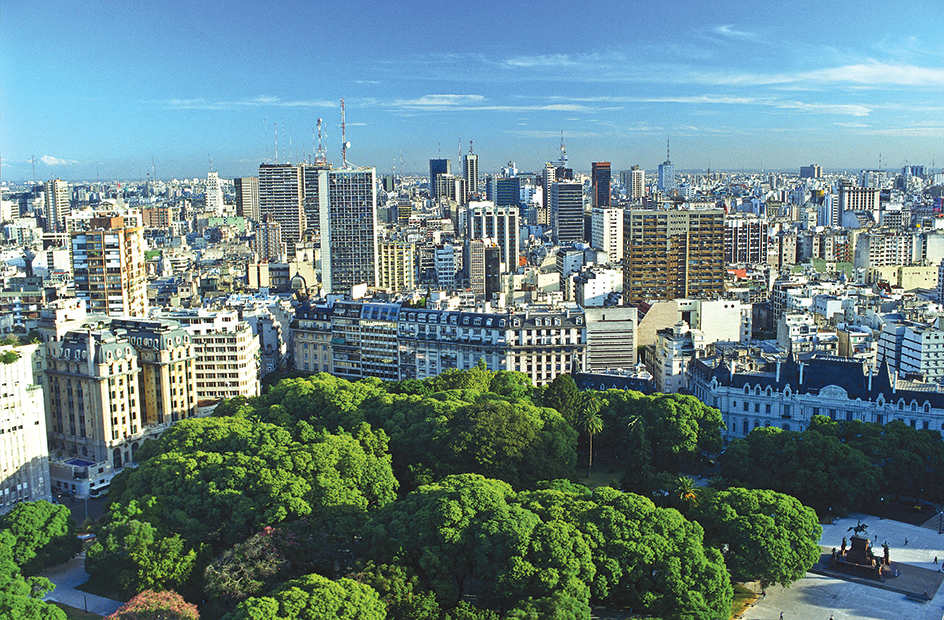
The name Buenos Aires is Spanish for fair winds. Early Spanish sailors named the broad harbor at the site for the patron saint of fair winds, Nuestra Senora Santa Maria del Buen Aire (Our Lady Saint Mary of the Fair Wind).
The city
of Buenos Aires covers an area of 78 square miles (203 square kilometers). Buenos Aires reflects a variety of architectural influences. Modern skyscrapers stand side-by-side with Victorian-style houses built in the 1800’s. Spanish colonial patios and plazas adjoin classic French monuments and government buildings. Broad avenues and many parks and plazas give the city a sense of spaciousness.
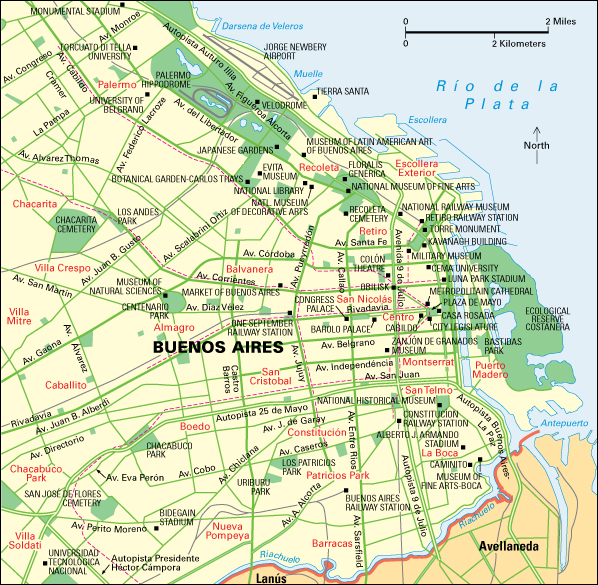
The Plaza de Mayo, in the oldest part of Buenos Aires, is the city’s historic and political center. The Casa Rosada (Pink House), which houses the offices of the president of Argentina, stands at the east end of the plaza. Through the years, the plaza has been a forum for protests. Other prominent buildings, including the Cabildo and the Metropolitan Cathedral, surround the plaza. The Cabildo, which served as a government building in the 1700’s and 1800’s, is now a museum. A wide boulevard called the Avenida de Mayo runs west from the Plaza de Mayo to the Congress Building.
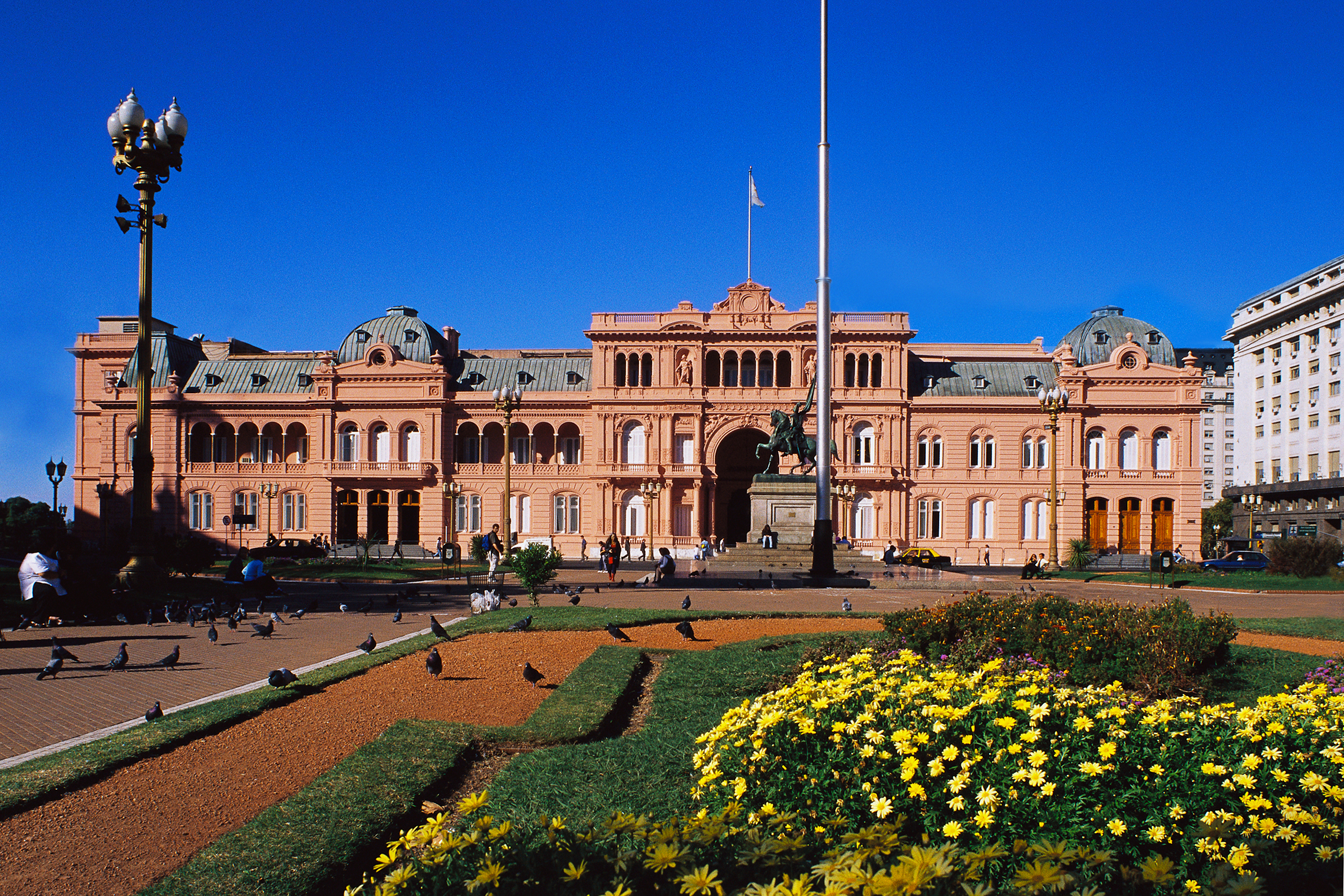
The central business district lies just north and west of the Plaza de Mayo. The broad Avenida 9 de Julio runs north and south through this district. This street is 425 feet (130 meters) wide. East of the central business district lies the harbor, which has huge docks and other facilities for ocean-going ships. Along a section of the waterfront, known as Puerto Madero, some docks have been made into modern apartments, upscale restaurants, and commercial offices. A waterfront promenade attracts local people and tourists. This area became a major center of night life in the 1990’s.
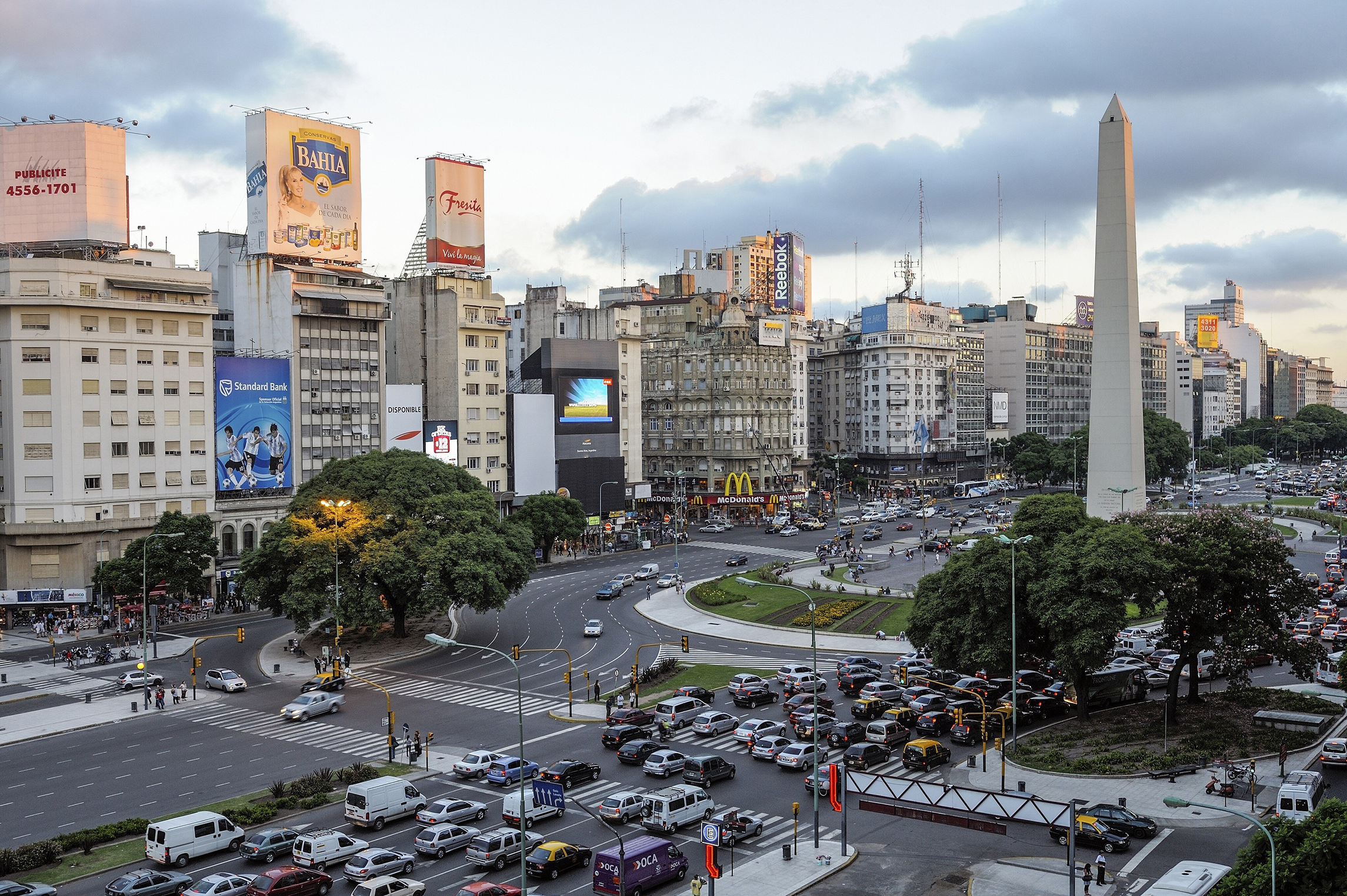
Residential neighborhoods called barrios occupy most of the northwestern, western, and southern parts of Buenos Aires. Each barrio has its own churches, markets, schools, and shops.
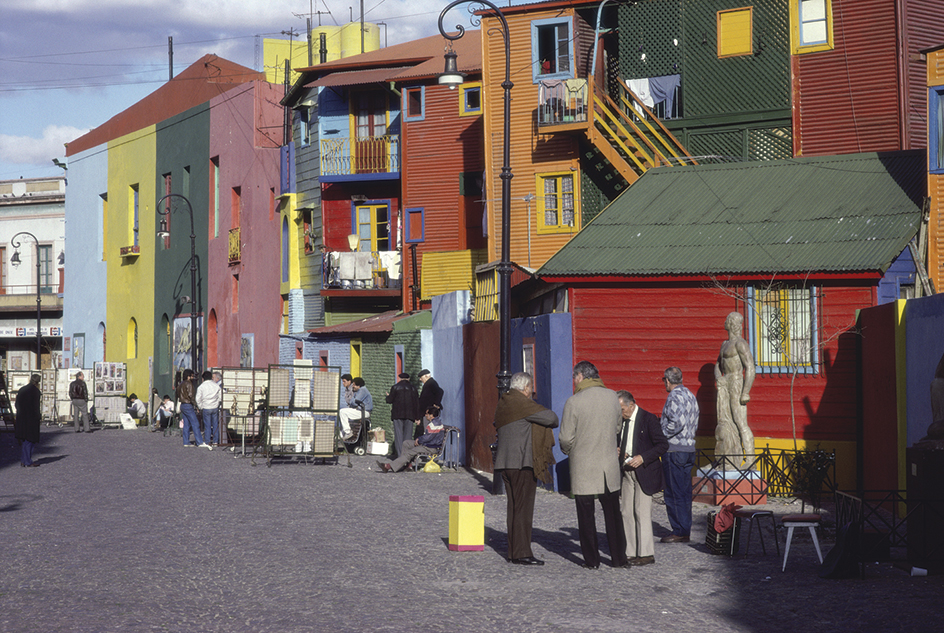
San Telmo is one of Buenos Aires’s oldest barrios. Originally the home of the city’s leaders and upper classes, it now attracts artists, tango dancers, and antique dealers.
One of Buenos Aires’s most colorful barrios is La Boca, known for its brightly painted houses and excellent Italian restaurants. La Boca was originally a center of trading and shipping. Italian immigrants settled in the barrio, giving it its distinct cultural character.
The barrio of Recoleta has a European feel. It boasts fashionable shops, art galleries, and restaurants, as well as tree-lined avenues and elegant French architecture.
Palermo, in northwestern Buenos Aires, is a neighborhood of gardens, mansions, and parks. Palermo’s parklands include a Japanese garden, as well as a botanical garden designed by the French architect Carlos Thays.
Buenos Aires’s museums and libraries include the National Museum of Fine Arts, the National Historical Museum, the Museum of Latin American Art of Buenos Aires, and the National Library. The Space for Memory and for the Promotion and Defense of Human Rights occupies a building that held prisoners during the “dirty war,” the government’s campaign to silence its opponents in the late 1970’s and early 1980’s. The Colón Theater, in the downtown area, ranks as one of the world’s finest opera houses. The city is also home to the University of Buenos Aires.
The people
of Buenos Aires are called porteños (port dwellers). About three-fourths of them are of Spanish or Italian ancestry. Other groups include descendants of East Asian, English, French, German, Lebanese, Polish, Russian Jewish, and Syrian immigrants. In most of the barrios, the population consists of a mixture of nationality groups. Porteños enjoy visiting with neighbors on the street, in parks and public squares, and in cafes.
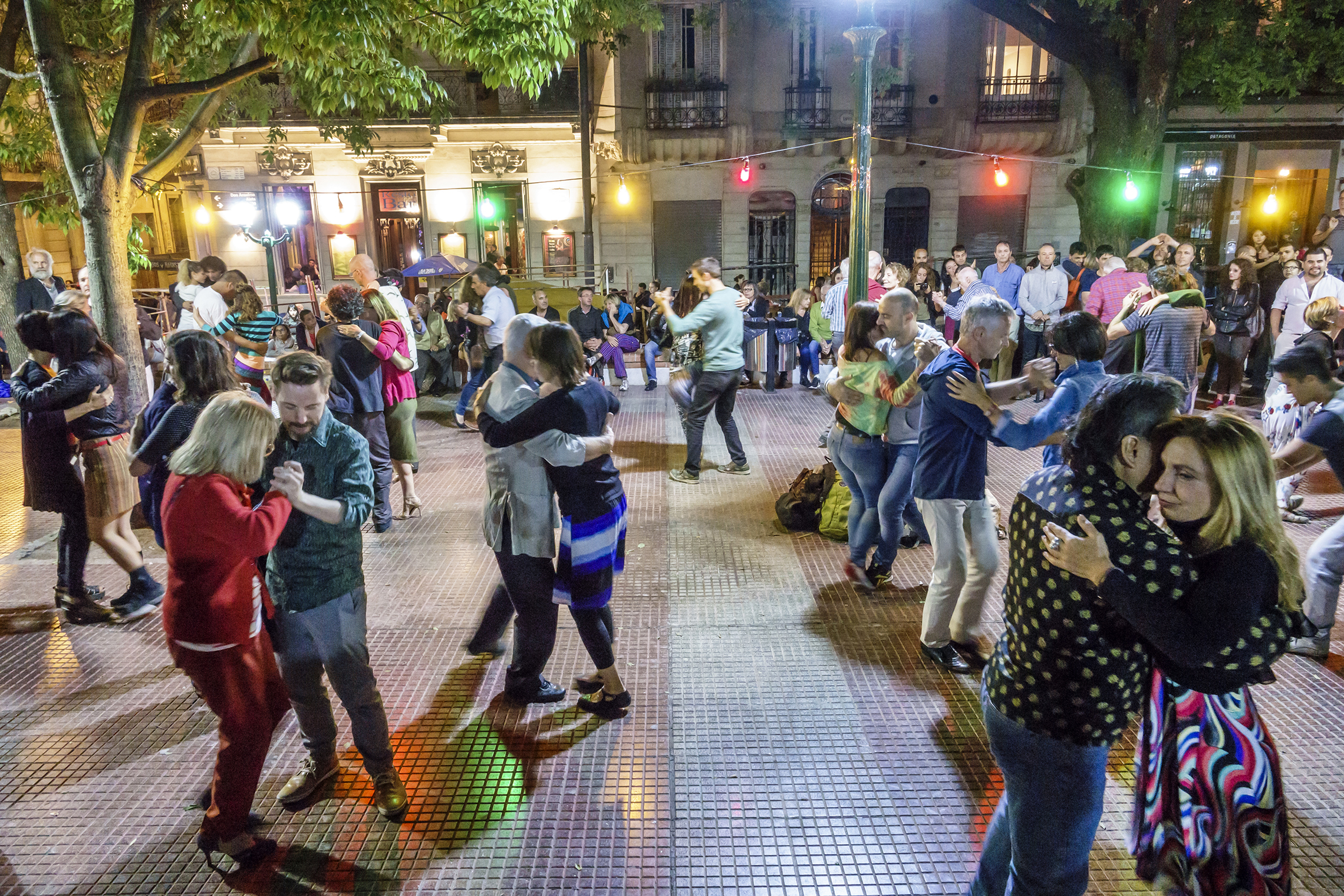
Almost all the people of Buenos Aires speak Spanish, the official language of Argentina, and many also speak other languages. Buenos Aires has several foreign language newspapers, as well as Spanish ones. Most porteños are Roman Catholics, but many practice other religions.
Many wealthy families of Buenos Aires own mansions in the northern suburbs or have elegant homes near the center of the city. But thousands of poor families live in wooden shacks crowded together in slums in the western and southern suburbs. Economic crises in the 1980’s and early 2000’s caused the standard of living of Buenos Aires’s large middle class to decline. The gap between the rich and poor has become more evident. Homelessness and crime have also risen because of the city’s economic troubles.
Economy
of Buenos Aires is based on trade. Most of Argentina’s foreign trade passes through the capital. Railroads and trucks bring products to the city’s port from all parts of the country and carry back other goods. Leading industries in the Buenos Aires area include meat packing; food processing; and the manufacture of textiles, rubber products, and electrical equipment.
History.
Spanish settlers founded Buenos Aires in 1536, but they left the area five years later because of Indian attacks. A group of settlers from Paraguay, led by a Spanish soldier named Juan de Garay, reestablished Buenos Aires in 1580.
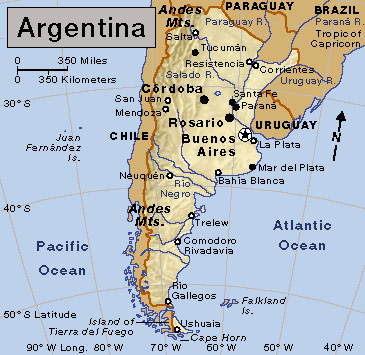
In 1776, Spain united its colonies in southeastern South America into one large colony ruled by an official called a viceroy. Buenos Aires became the capital and began to flourish as a port. In the early 1800’s, local leaders grew dissatisfied with Spanish rule, and the city became the center of the independence movement of South America. Buenos Aires set up its own government in 1810, and other areas ruled by the viceroy declared independence from Spain in 1816. The rulers of some of these areas formed a loose confederation that developed into the nation of Argentina by the mid-1800’s. Buenos Aires was officially declared the capital of Argentina in 1880.
In the late 1850’s, large numbers of immigrants came to Buenos Aires from Europe and other areas of the world. The city’s population rose from about 100,000 in 1850 to almost 1,000,000 in 1900. The period from the 1880’s to the 1940’s is considered Buenos Aires’s “Golden Age.” Wide avenues and impressive public buildings were built in the city during those years. Buenos Aires became one of the most beautiful and modern cities in the Western Hemisphere, and the cultural center of Latin America.
Immigration to Buenos Aires from other countries has decreased since the 1930’s. However, thousands of Argentines move from rural areas to the city each year in search of jobs. The population of the metropolitan area had increased from about 4 1/2 million in the 1940’s to about 13 million in the early 2010’s. Local industries cannot provide enough jobs for the newcomers, and widespread poverty has resulted. Housing and transportation problems have also increased.
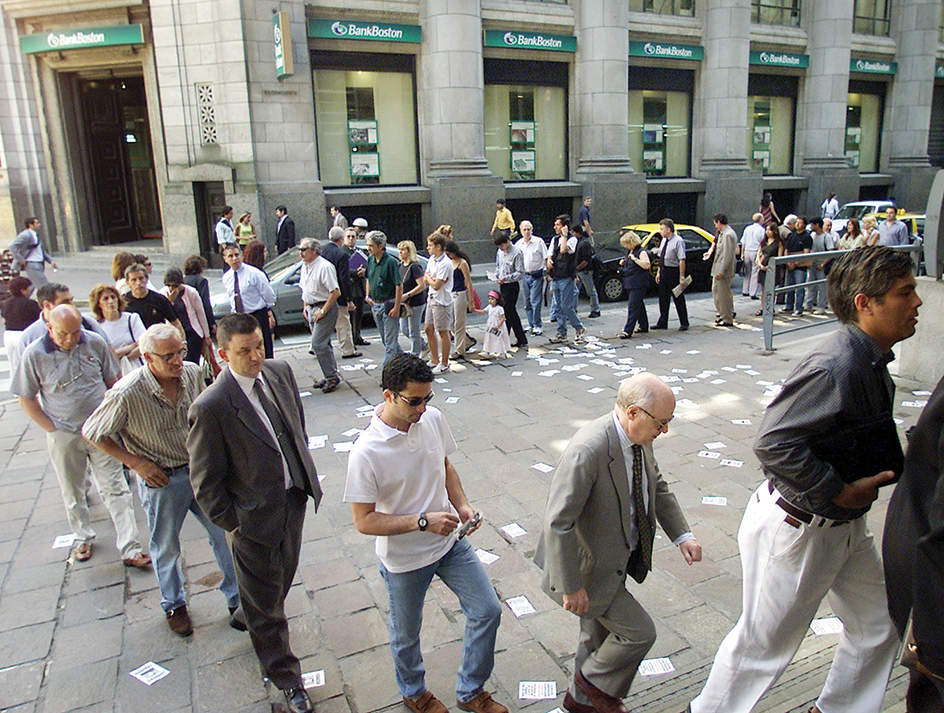
See also Argentina (Settlement and colonial life); Río de la Plata.
